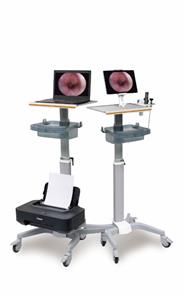Real-time detection and localization of ureteral openings in urological and surgical videos
The detection and localization of the ureteral opening is crucial in urological endoscopy and surgery. However, because the appearance of the ureteral orifice varies from individual to individual, from time to time, and from different pathological factors, it is sometimes challenging to accurately locate and locate the ureteral orifice. In order to automatically identify different types of ureteral openings in surgical videos, this paper proposes a deep learning-based ureteral opening detection and tracking system. The framework is mainly composed of three components: preprocessing part, ureteral opening detection model, and tracking model. For the preprocessing part, this paper applies conventional data augmentation strategies and specific data augmentation strategies to increase the diversity of training samples. The ureteral opening detection model (Refined-SSD) is obtained by improving the classic model Single Shot Multi Box Detector (SSD) in the field of object detection. Then the Refined-SSD was fused with the tracking algorithm CSRT to form the ureteral opening detection and tracking system. In this paper, the detection model is only trained using resectoscope images with more complex background information, and then tested using ureteroscope images. The experimental results show that the model trained using resectoscope images can be successfully applied to other types of urological endoscopy images, and the evaluation indicators are all around 0.9. We further evaluated the detection model proposed in this paper on the resectoscope video and ureteroscopy video datasets, and the experiments show that the proposed ureteral opening detection model can identify and localize the ureteral openings in two different uroscopes in real time in the video . In addition, in resectoscope video sequences and ureteroscopy video sequences, we not only compared the effect of the detection and tracking model (Refined-SSD+CSRT) proposed in this paper with the effect of a single detection model, but also fused with the detection model of other The effects of the four tracking algorithms are compared, and the experiments show that the ureteral opening detection and tracking model proposed in this paper has better performance and achieves an average detection speed of 20ms per frame. Therefore, the detection and tracking model can identify and localize the ureteral opening accurately and in real time in uroscope surgery videos, and can be applied to different types of uroscopes




